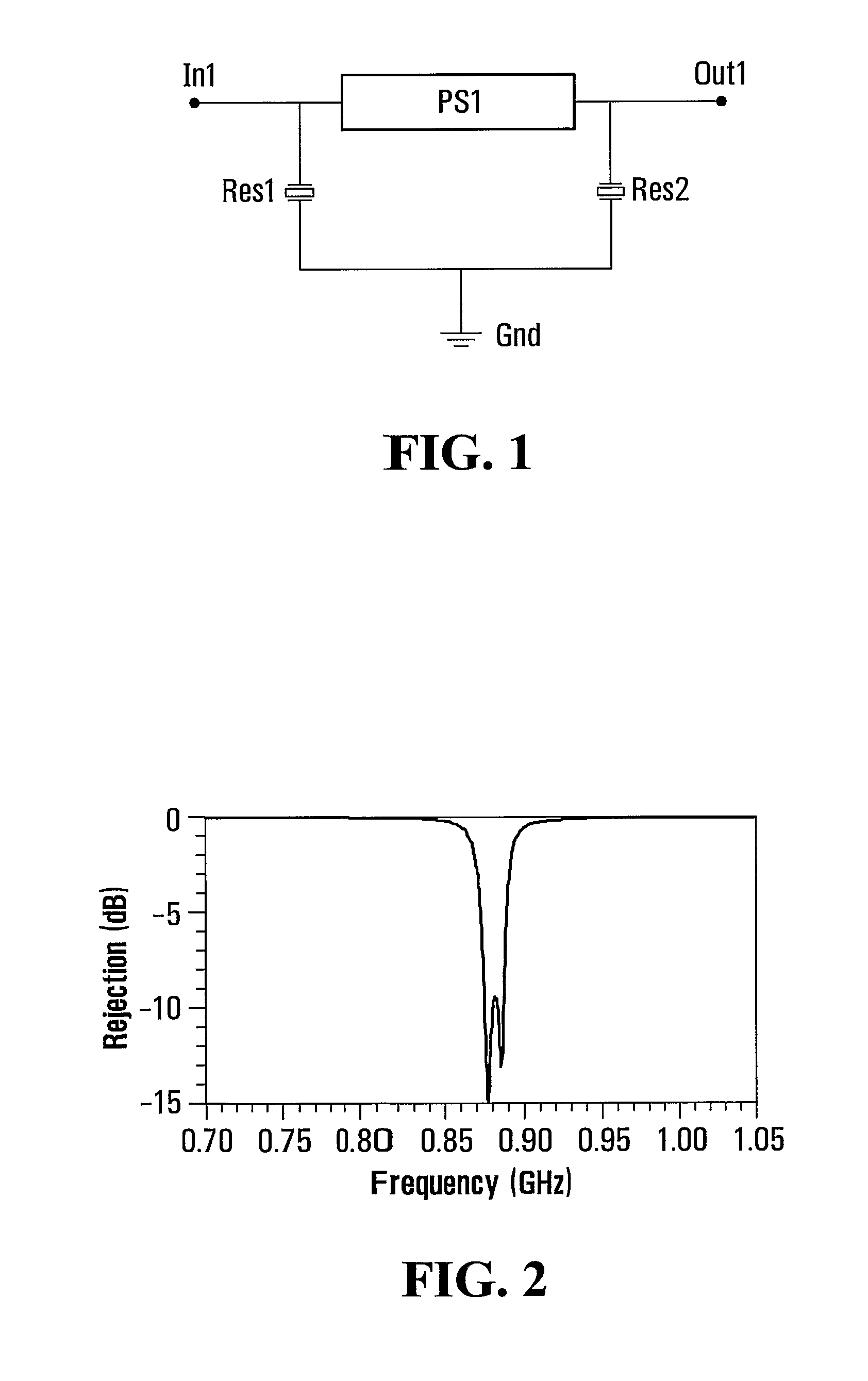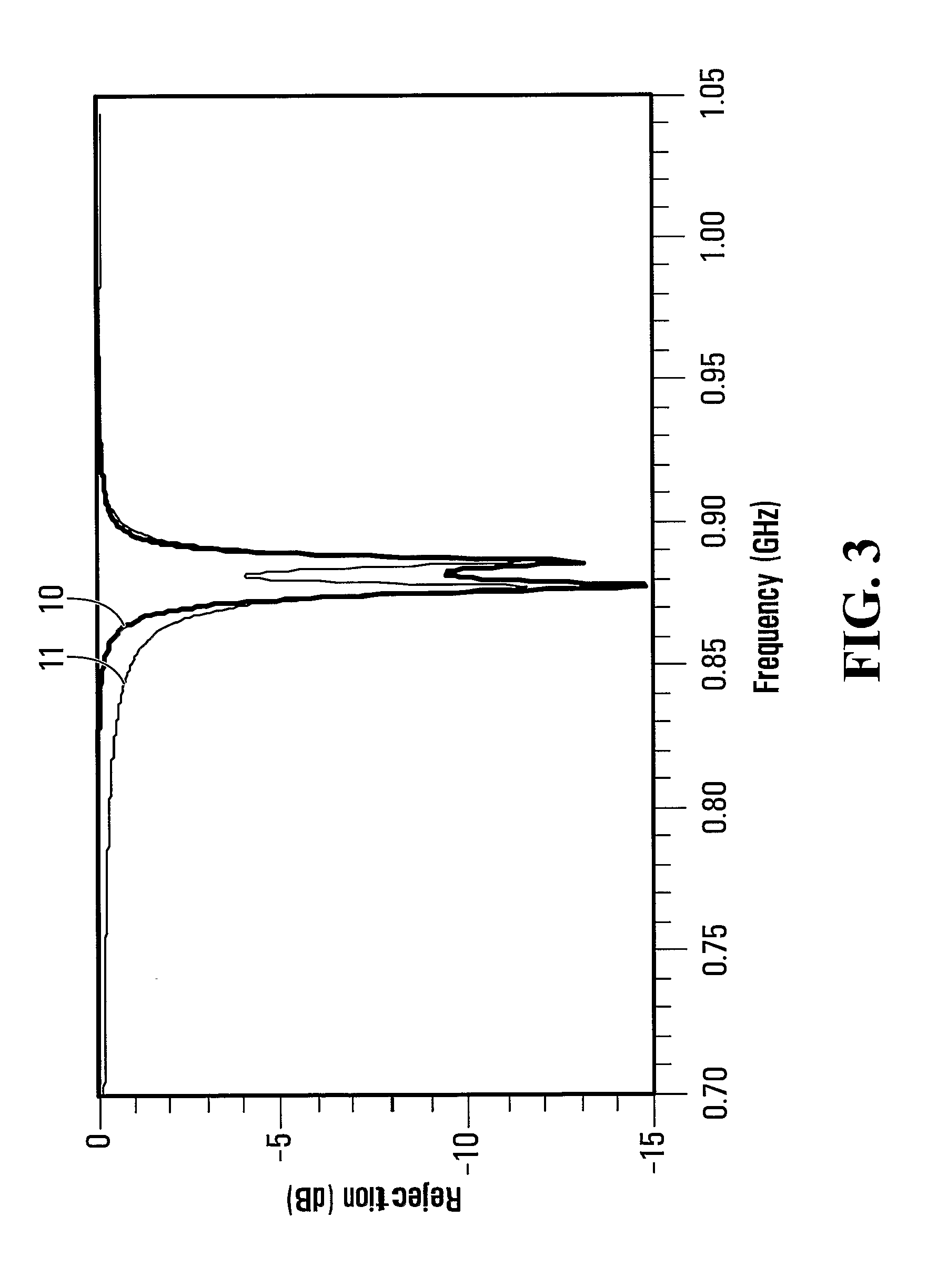Band reject filters
a filter and band pass technology, applied in piezoelectric/electrostrictive/magnetostrictive devices, amplifiers with coupling networks, semiconductor devices/discharge tubes, etc., can solve the problems of band pass filters produced using saw resonators that have relatively high insertion losses, and typically occur losses, etc., to achieve low cost, low loss, and withstand very high rf power
- Summary
- Abstract
- Description
- Claims
- Application Information
AI Technical Summary
Benefits of technology
Problems solved by technology
Method used
Image
Examples
Embodiment Construction
[0050]High frequency RF and microwave designs often use distributed elements. Band reject filter design can be made more versatile, with improved performance, by leveraging impedance inverters between adjacent resonators. One of the simplest forms of an impedance inverter is simply a transmission line with approximately 90° of phase shift at the desired frequency of operation. Impedance inverters can also be designed as discrete components using lumped elements at lower frequencies where the quarter-wavelength transmission line would be excessively large or where space is critical. The use of impedance inverters enables band reject filters to be created using exclusively shunt or exclusively series resonators. Furthermore, these band reject filters can be designed to utilize, as an impedance inverter, the quarter-wave transmission lines which are already present in elements such as a Quadrature coupler, Wilkinson combiner or Balun, all elements which already exist on some PA (Power ...
PUM
 Login to View More
Login to View More Abstract
Description
Claims
Application Information
 Login to View More
Login to View More - R&D
- Intellectual Property
- Life Sciences
- Materials
- Tech Scout
- Unparalleled Data Quality
- Higher Quality Content
- 60% Fewer Hallucinations
Browse by: Latest US Patents, China's latest patents, Technical Efficacy Thesaurus, Application Domain, Technology Topic, Popular Technical Reports.
© 2025 PatSnap. All rights reserved.Legal|Privacy policy|Modern Slavery Act Transparency Statement|Sitemap|About US| Contact US: help@patsnap.com



